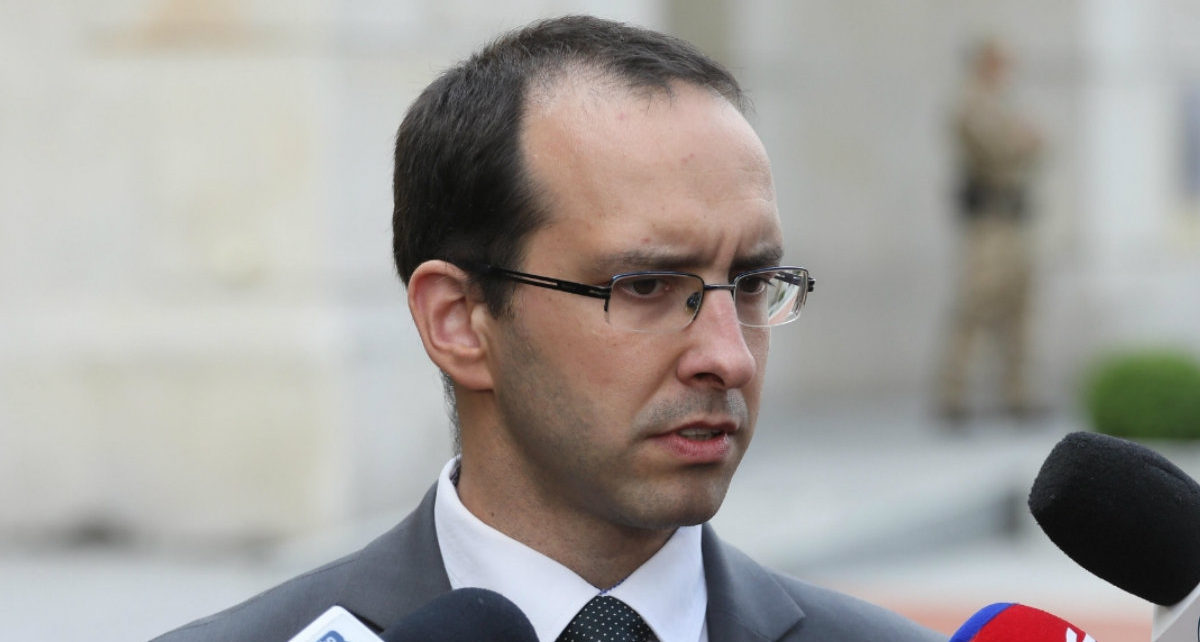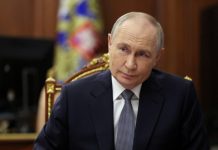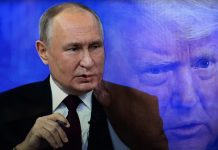By Stanisław Żaryn, for StopFake
The recent increase by the Kremlin of military pressure on Ukraine has been propped up by an intense hostile propaganda activity complemented with additional elements of information warfare. Russian and pro-Russian propaganda media have been disseminating “the good old” narrative that accuses Ukraine and the West of staging provocations against Russia. The aim of this combined information-psychological operation is to lay the blame for the escalation of recent events on other countries, to cover up the actions taken by Russia and to impede the identification of the Kremlin’s highest priority goals.
Since the beginning of April this year, the Russian media have intensified the spread of anti-Ukrainian and anti-Western narratives. Russian propaganda has been accusing Kiev of preparing for war in Donbas, escalating the situation or even deliberately violating the law and international agreements. Similar accusations are being thrown against other countries too, particularly NATO member states. The U.S. and Poland are being most often cited as the countries whose actions also escalate the situation in the region and may eventually cause an outbreak of war in Ukraine. This is how Moscow is trying to lay the blame for the increase in tensions on the West. The Kremlin has employed a wide array of entities, institutions and officials to make the public opinion believe that Russia poses no threat whatsoever to the peace in Europe or that Russia displays no hostility whatsoever to any of the states. Even the Russian president Vladimir Putin himself engaged in spreading this “message of peace” in his latest state-of-the-union address. He pledged that the Kremlin remained open to the dialogue with the West, despite the latter being aggressive, unfair and hostile to Russia. It was while he was giving his speech that the Russian forces were finishing their deployment in unprecedented masses along the border with Ukraine.
Recent weeks have been marked by Moscow’s intense, multi-element information warfare efforts aimed at covering up its aggressive stance against Ukraine. The Kremlin intends to mislead the audience about the nature of its actions. Therefore, it employs a well-tried method of portraying its actions as a direct response to Western aggression, one that the Kremlin has made up of course. And so, what the world has been witness to for quite some time now, is the continuation by the Kremlin of its INFOWAR activities designed so as to sow fear and cause the feeling of uncertainty in Ukrainians, but also in Poles and other Western societies. Everybody is watching Russia’s every move closely wondering what comes next. First Moscow deploys thousands of troops along the border with Ukraine and moves warplanes to the occupied Crimea and warships on the Black Sea. Then it pulls its forces back, claiming that the whole military build-up was never anything else but a training exercise. There is clearly an element of psychological warfare efforts here. One must realize that since Russia has been waging a war against Ukraine for a couple of years, the presence of Russian troops in Ukraine and along the border is, unfortunately, nothing new. Therefore, the latest events can be understood as Moscow’s show of force or a large-scale provocation. Or maybe the Kremlin is testing Kiev and the West before a wider military operation against Ukraine. Either way, one thing is for sure – the Kremlin is using what it has been using for decades, namely disinformation and propaganda.
There is also a strong possibility that Russia’s recent wide-ranging efforts to escalate tensions with Ukraine served yet another goal – to cover up other issues high on Moscow’s agenda. Note that the Russian military build-up at the Ukrainian border has drawn the Western world’s attention away from Nord Stream 2 (the second after Nord Stream Russia-to-Germany gas link) which has come under heavy criticism as it is nearing its completion. Meanwhile, it is this dangerous pipeline that will be shaping and affecting Ukraine’s security setting in the near term. For the time being what still prevents Russia from making more overtly aggressive moves against its neighbour is the need to pose as a reliable supplier of natural gas to Europe. The financial condition of the Russian energy sector relies heavily on this reliability. And Ukraine is the main transit country for the Russian gas. However, with the completion of Nord Stream 2, whose route is to bypass Ukraine, Russia will have an open path to further destabilize Ukraine and take seriously aggressive actions against it. If that is the case, in the Kremlin’s twisted logic, actions in breach of the security of Ukraine will no longer affect the reliability and guarantees of the deliveries of the Russian gas westwards.
Russia’s actions in and around Ukraine require to be monitored and the Kremlin’s aggressive moves must be met with a real response. It is essential that the West keeps an eye on it. But for sure, those who care about peace in Central and Eastern Europe must not let Nord Stream 2 go off the radar. The “bypassing” of Ukraine in energy terms is not an option. The existence of the link between the reliability of Russia as a supplier of energy fuels and the stability of the situation in Ukraine will hold the Kremlin’s aggressive instincts. There is only one condition for this break to work – failure of the completion of Nord Stream 2. If built, the pipeline will provide Russia with additional possibilities to act against Ukraine. The halting of Nord Stream 2 is today one of the keys to the security of CEE.
By Stanisław Żaryn, for StopFake
Stanisław Żaryn is Spokesman for Poland’s Minister Special Services Coordinator, Director of the National Security Department at the Chancellery of the Prime Minister.





